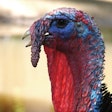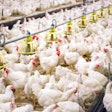
For the first time in many months, no cases of highly pathogenic avian influenza (HPAI) have been officially reported in poultry throughout the world.
However, a low-pathogenic avian influenza (LPAI) virus belonging to the H5 family has been detected among a flock of 2,600 mallard ducks in central France, according to the official report from the agriculture ministry in Paris to the World Organisation for Animal Health (OIE). The virus, which has not yet been fully characterized, was detected as part of routine surveillance by French veterinary services. Reared for later hunting, the birds had shown no clinical signs of disease.
The affected farm is located in the department of Loir-et-Cher. Source of infection is unknown, but the ducks had been kept on free-range and so may have picked up the infection from wild birds.
Last time an LPAI virus of this family was detected in France was in July of 2018.
Food safety authorities in Hong Kong have immediately banned the import of poultry products from the affected department. The ban covers poultry meat and eggs, reports Xinhua. Hong Kong imported a total of 7,300 metric tons of chilled and frozen poultry meat from France during the first half of this year, as well as 2.3 million eggs, according to Special Administrative Region trade statistics.
As France the recurrence of LPAI in poultry, Denmark’s disease situation has been reported as “resolved.” OIE recently learned from the Danish animal health agency that the last time the low-pathogenic H5N1 virus was detected in the country at the end of June. At that time, a national surveillance program revealed the presence of the virus in mallard ducks that were also being reared to restock hunting grounds.
Human avian influenza infection in China
Further details have been released about the most recent case of influenza A(H5N6) in China. The patient was a woman aged 59 from Beijing, according to the World Health Organization (WHO). She hospitalized in August this year with severe pneumonia.
Later investigations revealed the most likely source of her infection to have been chilled meat from southern China. No further cases were found among this patient’s contacts.
This was the 24th lab-confirmed case of influenza A(H5N6) in China since 2014.
Most recent human cases of influenza A(H5N1) and influenza A(H7N9) in the world were reported during April this year, according to the Centre for Health Protection in Hong Kong.
View our continuing coverage of the global avian influenza situation.

















